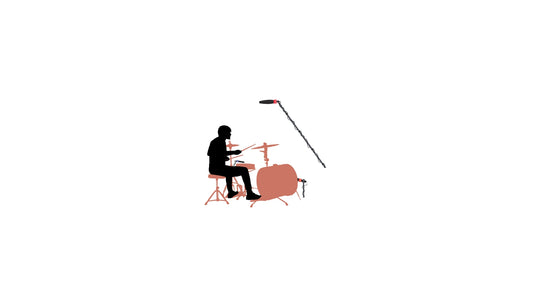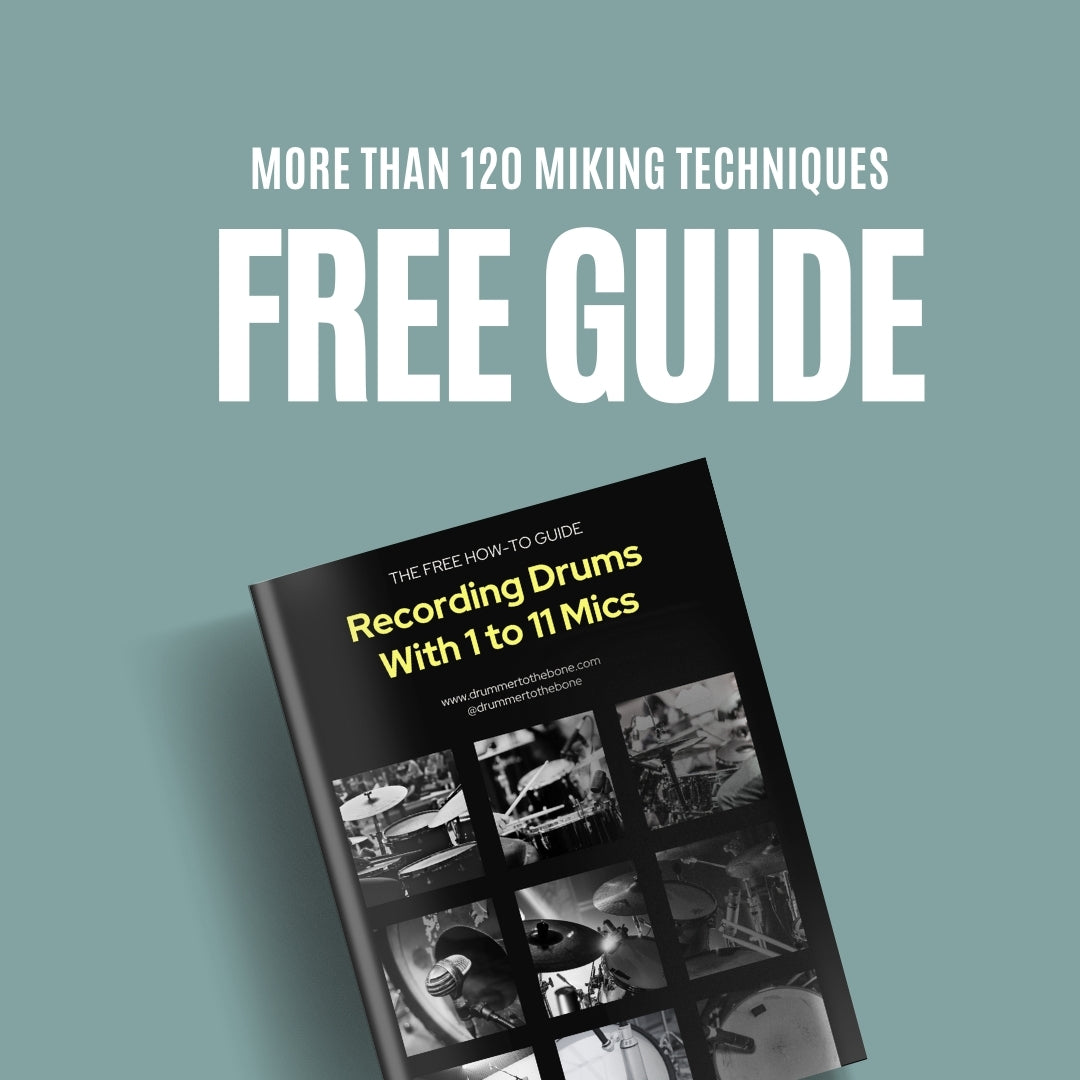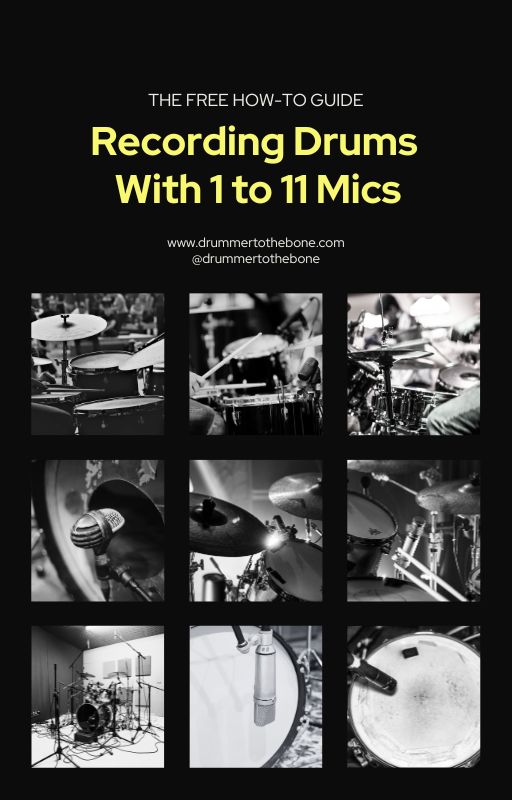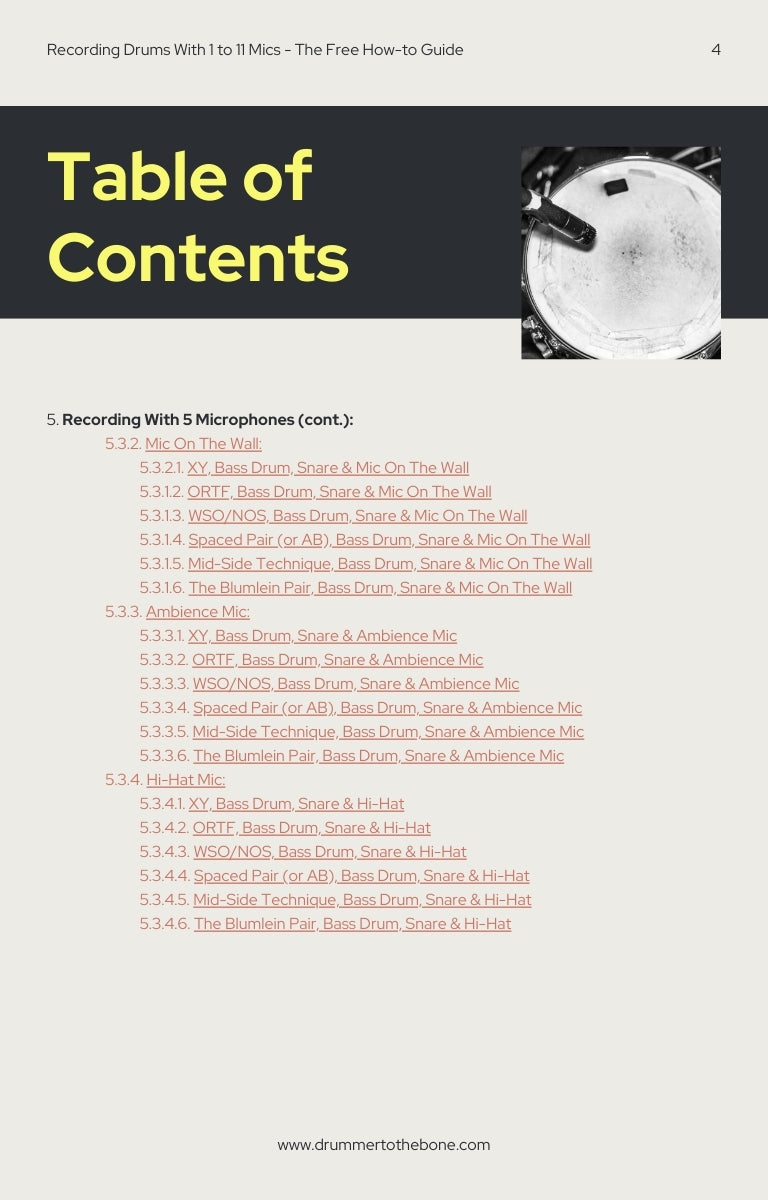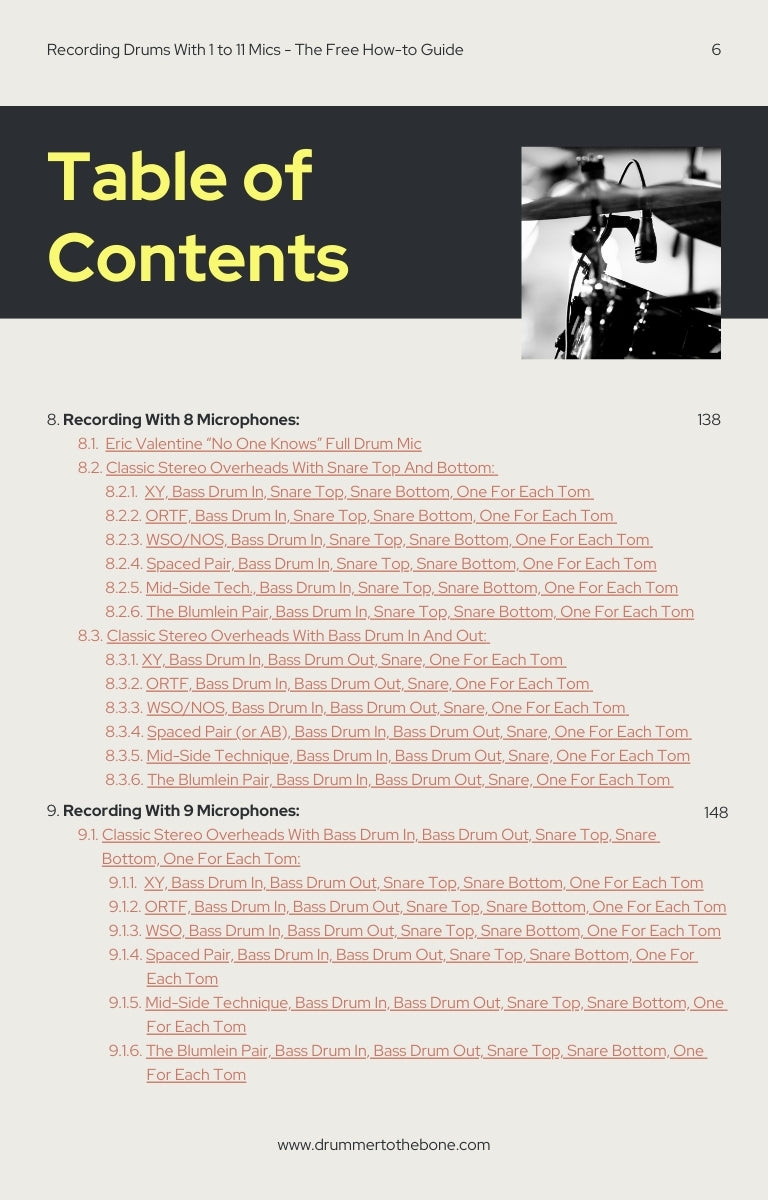The complete drum miking approach used by Eric Valentine in Queens of the Stone Age 2002’s album “Songs for the Deaf”, featuring Dave Grohl on drums and—arguably—one of the best drum sounds ever, consists of 8 mics.
- AKG D20 on bass drum.
- Northern Electric 633A salt shaker for the snare.
- Speaker (similar to a Yamaha NS10 speaker) used as a microphone for snare.
- AKG C12A for the left side of the kit.
- Neumann CMV3 for the center of the kit.
- AKG C12A for the right side of the kit.
- Sony C-37A as an ambience mic, placed high on the room left.
- Sony C-37A as an ambience mic, placed high on the room right.
If you want to see how the drum sound was achieved in its entirety, you can check it out here. Also, for further reference, here’s a YouTube video of Eric explaining his entire approach (and that of the entire record, not only drums)
It is important to note:
- Dave recorded the drums and cymbals separately! Electronic cymbal pads were placed instead of cymbals, so Dave could record the drums but listen to cymbals while they made the initial pass through of the record. Once the drums were recorded and the band was happy with the songs, they muffled the drums and recorded the cymbals.
- Most of the drums for this record, including “No One Knows”, “First it Giveth” and “Song for the Dead” were tracked in a 8’ x 12’ isolation booth with high ceiling (16’), curtains and cork on the walls and carpet on the floor. So, a pretty “dead” room, but with a high ceiling.
- Valentine placed 2 Sony C37A’s (a Multi-Pattern Tube Condenser Microphone) high on the ceiling, to capture the best ambience possible. That’s another reason why the drums sound huge.
So, in case you’re looking to go into full-on “desert mode”, please have in mind:
- The drum room had a very high ceiling.
- Lots of room mics were used. 5 to be exact: 3 closer to the drums and 2 ambience.
- Drums and cymbals were recorded separately.

Here’s the outline:
- Place each room mic (left, center and right) equidistant from each other.
- Place them around 4 feet off the floor. You don’t want to place them too high, otherwise you’ll lose a lot of low-end.
- Make sure you’re pointing them towards their corresponding section of the drum set.
- Place an ambience mic around 12 feet high (depending on your room), on the left side of the kit.
- Place an ambience mic around 12 feet high (depending on your room), on the right side of the kit.
- Move them around in the room until they both sound balanced between the bass drum and the snare and are roughly equal distances from the snare drum.
- Make sure there’s a relationship between the height of the left/center/right mics and the ambience mics, in order to ensure phase-coherence. In this case, if the left/center/right mics are at ~4 feet off the floor, then the ceiling ambience mic is at ~12 feet, which maintains the 3:1 rule.
- Place a microphone inside the bass drum (or just outside), to avoid additional bleeding
- Place a (preferable) dynamic mic on the snare, about 3 fingers from the top head. Of course, you can go full-on Valentine and use a Northern Electric 633A salt shaker.
- Place a dynamic mic on the bottom of the snare, ideally on the opposite place for the top microphone, about 3 fingers from the resonant head.
- You might want to reverse the polarity on one of the snare mics (usually bottom mic), in order to obtain a fuller sound.
Pros of this technique:
- Given that you have the right room, time to spare (to record twice: drums and cymbals) and a good drummer, you can get a fantastic sound, with clear drums and clear cymbals.
- Big drum sound, with natural reverb coming from the 2 condensers high on the ceiling.
- If your drums and room sing, this approach will sing too.
Cons:
- You depend a lot on the room. With the high ceiling mics, you might want a more “dead” room than a “bright” one. You don’t want sound waves bouncing off the walls and ceiling.
- If you do record the drums and cymbals separately, it is a risky approach. In the words of Eric Valentine himself:
"There is a trade-off (with this method). You can do some cool miking stuff when the cymbals are separated, but you risk having the cymbal sound disconnected from the overall drum performance both sonically and with the feel. I have not chosen to do the totally separate cymbal thing again. I don't think the trade-off is worth it."
Let that sink in. The producer of “Songs for the Deaf” has never recorded drums and cymbals separate again, because he doesn’t think the trade-off is worth it.



